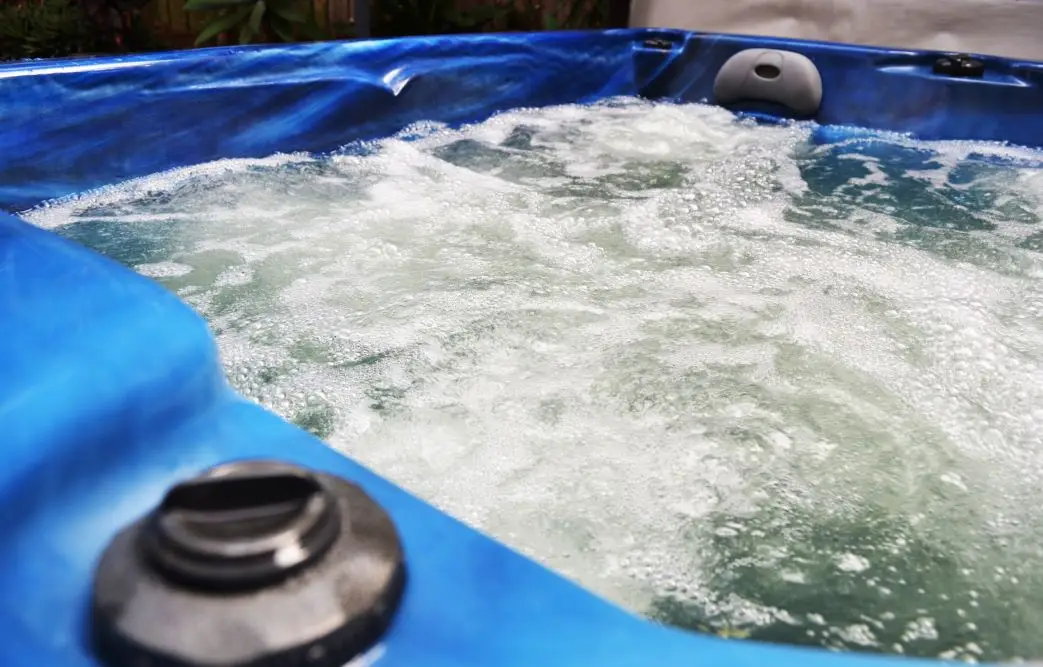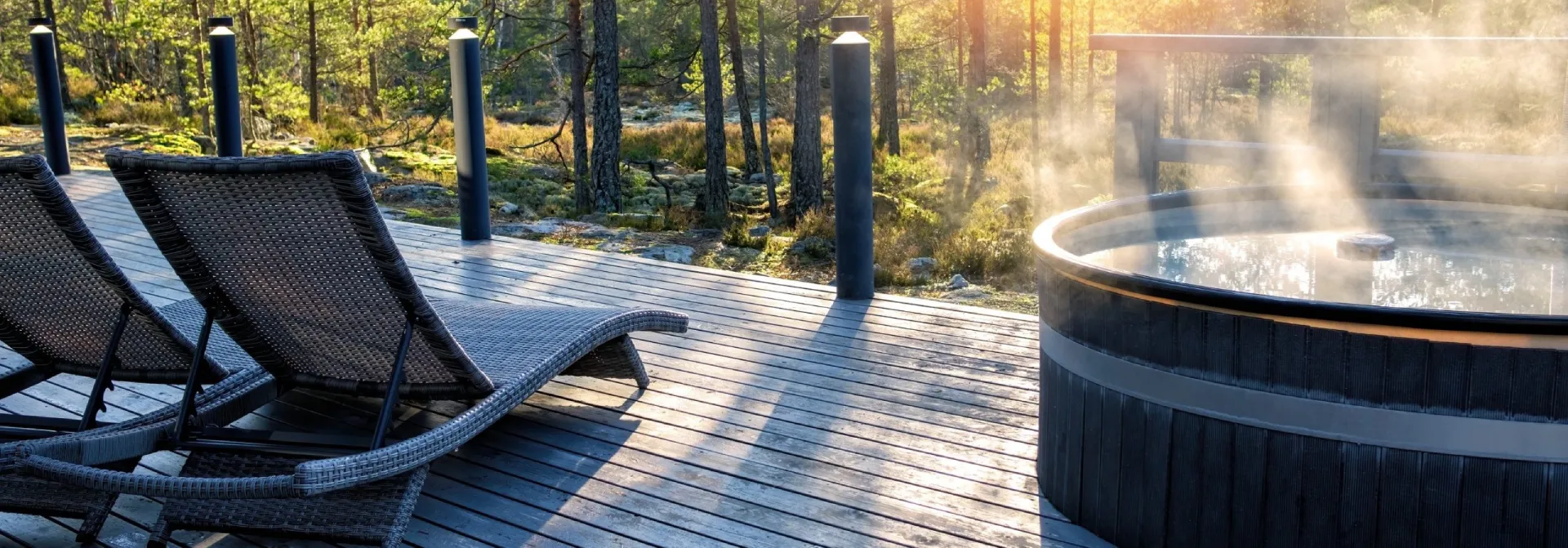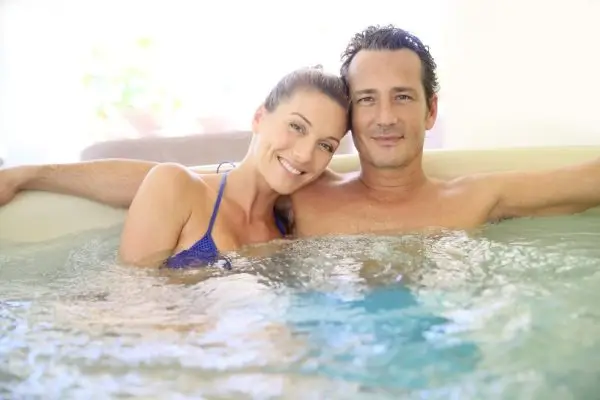Beginner's Guide to Spa and Hot Tub Water Care
If you’re like me, who’s a freak about hygiene, Spa or Hot Tub Water Care will be your top priority. For sure, you’ll agree that proper water care is essential for enjoying your hot tub or spa experience to the fullest. So, this is what this article is all about. I also included all the supplies you’ll need and how to maintain chemical balance. And in case you encounter common hot tub problems, this article covers maintenance schedules and troubleshooting tips.
Go, grab your favorite drink, and let’s start!
Understanding the Importance of Hot Tub Water Care
Imagine bathing in a tub with bacteria and algae around. Ewww!! That’s the gross environment it will create if you have unclean spa water! But you can avoid this nasty thing by implementing hygienic practices right from the start. Clean water keeps the tub hygienic, resulting in a safe and enjoyable hot tub experience.
Aside from ditching skin irritations, taking care of your hot tub’s water chemistry also helps extend the life of its components. This will save you money on repairs or replacements in the long run. Thus, hot tub water care should be on top of your list.
Benefits of Regular Spa Water Care
Many folk think that frequent water changes are the only way to keep the hot tub clean. This is a costly misconception. The truth is if you implement water care, you can reduce the need for frequent water changes. It saves you time, energy, and resources. Regular water care improves the effectiveness of sanitizer levels. It ensures that the water remains safe and free from harmful bacteria and algae, even without replacing it. Such practices will make your spa ready for use anytime you feel like having a relaxing bath.
Risks of Neglecting Hot Tub Water Care
Even if you’re busy, don’t neglect the spa water care, as it can lead to disgusting results like cloudy, dirty, and unhygienic water. Yikes! Not only will it spoil the environment for relaxation, but it will also pose serious health problems for you. Improper water chemistry levels can lead to skin and eye irritations. If you experience discomfort during your soaking sessions, it must be because of neglected water quality. Without regular spa water care, your hot tub filter may become clogged, compromising water circulation. Far worse, it can even lead to the breakdown of hot tub components, which will lead you to pay for costly repairs.
4 Essential Supplies for Hot Tub and Spa Water Care
Now that you’re ready to implement regular spa water care, your next move is to invest in the following supplies. Based on personal experience, they’re essential and helpful in carrying out the work.
Water Testing kits
Water testing kits allow you to monitor essential factors such as pH levels, alkalinity, and chlorine or bromine levels. You can choose from various testing options, including traditional test strips and digital testing devices. What I personally own is the conventional test strip since I’m more acquainted with using it. Conduct regular testing to prevent skin irritation and corrosion in your hot tub. You’ll quickly identify inconsistencies in the water and adjust these levels accordingly. Although added work, it’s best not to skip this step in your hot tub maintenance schedule.
Hot tub chemicals for Balancing Water pH
An improper water pH will bring you discomfort when bathing. Once you test the pH and find it unsuitable, you can adjust the levels accordingly by applying chemicals like pH increaser or decreaser. My tip for balancing water is to apply gradual amounts of chemicals. Test again, then adjust until you achieve the correct level. You’ll be surprised because even just a small amount of chemical adjustment can make a big difference in the overall quality of your hot tub experience.
Cleaning Supplies for Hot Tub Water Care
Since we want our hot tub clean and bacteria-free, we should have the right cleaning supplies on hand. A scrub brush helps me a lot to tackle any stubborn dirt or grime that accumulates in my tub over time. I also use a filter cleaner to ensure your hot tub’s water stays clear and debris-free. One tip when choosing a surface cleaner is to ensure it suits your hot tub’s material and chemical balance. If not, they may end up damaging your tub. Always read the manufacturer’s guide or label to be sure.
Hot Tub Cover to Protect Your Spa
Lastly, don’t forget to invest in a high-quality, durable hot tub cover to protect your spa and ensure its longevity. Some tub owners fail to include this, and their tub gets ruined. I have one that’s a waterproof and weatherproof cover. It’s heavy-duty and very durable. Not only does it keep debris out, but it also helps to maintain the water temperature, which saves me energy costs in the long run. Choose a cover that fits properly and is securely fastened with straps or tie-downs to prevent wind damage.
My observation is that putting a cover on the hot tub also reduces water evaporation, lessening the need for constant refilling. Later, you’ll realize that this small investment goes a long way in caring for your hot tub.
Can you use baking soda in a hot tub?
Yes! Baking soda is used to increase the alkalinity level in your hot tub. Just add 1 tablespoon (17 grams) of baking soda to your hot tub for every 100 gallons (378 liters) of water it holds.
Hot Tub Water Care Maintenance Schedule: Daily, Weekly, and Monthly Tasks
The reason why I enjoy improved water quality, prolonged lifespan of my equipment, and maximized relaxation experience is because I maintain my hot tub regularly. Yes, care and maintenance is the key! I admit these tasks were demanding at first, but sticking to the schedule actually helped me save time and money.
Daily Tasks
My recommendations for daily maintenance care include checking the water level and adding more, if necessary, to ensure proper circulation. Use a skimmer or net to remove any debris floating on the surface of the hot tub’s water. Test the pH and sanitizer levels using test strips or a digital tester, and add hot tub chemicals as needed to maintain the proper balance in the water. Instead of keeping water stagnant, run the hot tub for at least 15 minutes to circulate the water and ensure adequate filtration. Conduct these tasks even if you’re not planning to soak in the tub.
Weekly Tasks
Weekly tasks include testing and balancing alkaline levels, adding chlorine tablets or liquid chlorine, and cleaning the filter. My usual process is to start cleaning the waterline to remove any dirt or debris that may have accumulated. Next, I clean the filter to ensure proper water filtration. Scrubbing the spa shell will help remove any stains or build-up. It’s also important to check the water level and add more, if necessary, to ensure proper operation. Lastly, I clean the cover and the surrounding area to keep your hot tub looking its best.
Monthly Tasks
I suggest that you shock the hot tub once a month as this helps eliminate bacteria buildup and keeps the water fresh. Don’t forget to clean the hot tub cover and filter every month to prolong their lifespan. Once a month testing of the total alkalinity and calcium hardness levels also ensures proper water balance.
Quarterly & Yearly Tasks
It’s ideal to drain and refill the hot tub to refresh the water every few months. This is also the best time to deep clean the filters to ensure optimal filtration. Take a moment to inspect the cover for any damage and make necessary repairs or replacements. Every year, you must check for leaks or cracks in the hot tub and address them promptly. Additionally, inspect and replace the heater if needed and perform thorough testing of the water chemistry to maintain a clean and balanced environment.
7 Easy Steps to Maintain The Chemical Balance in Your Hot Tub Water
Maintaining chemical balance isn’t as complicated as you think it is. Follow these seven steps to keep your hot tub’s water in perfect condition.
1. Circulate the Water
Water circulation helps distribute chemicals. This process also heats and filters the water. When doing this step, aim for at least 4 hours of circulation per day or follow the manufacturer’s recommendations. I use a timer to ensure consistent circulation and filtration. Regularly cleaning the hot tub filter also helps with proper water circulation. The more the water flows, the lesser the chance of having stagnant areas in the tub. The result is cleaner and clearer water.
2. Water Testing for Water Hardness and pH Increaser Levels
Scheduling water testing every week is an excellent way to prevent potential issues. Water hardness and pH increaser levels are two important factors to consider when testing. Water hardness refers to the amount of dissolved minerals in the hot tub’s water, while pH increaser affects its acidity. Simple use of a test strip or kit can check these levels. If the water is too hard, you may need to add a water softener. If the pH is too low, adjust using appropriate chemicals.
3. Water Treatment with Suitable Products and Chemicals
To avoid potential damage, look for chemicals and products specifically designed for hot tubs and spas. They’re formulated to address the unique needs of these systems. I always reiterate to buy from reputable suppliers only. For those looking for natural alternatives, mineral cartridges can be a good option as they help reduce the use of chemicals.
4. Remove Hot Tub Foam
Foam in your hot tub is quite a nuisance, right? The most common cause of foam is contaminants like detergents and lotions that enter the water. You can use anti-foaming agents or adjust the pH and alkalinity levels in the hot tub’s water to remove foam. Of course, regular cleaning of the hot tub cover and filter can also help prevent foam buildup. Before I dip in the tub, I make sure I use low-foaming products and rinse off well to minimize foam in the first place.
5. How to Remove Cloudy Water
If your hot tub’s water looks cloudy, it’s because of poor filtration or a chemical imbalance in your hot tub’s water. I’ve experienced this scenario before in my hot tub. What I did was I tested the pH levels of the water and adjusted them as needed. Then, I also checked the alkalinity and calcium hardness levels and made necessary adjustments. Cleaning out debris and filter cartridges will improve water circulation and filtration. Shocking your hot tub with an oxidizing agent will help remove any bacteria or contaminants causing cloudiness.
6. Spa Shock Treatment
Spa shock treatment works by oxidizing organic contaminants like oils, lotions, and bacteria. In short, it keeps your water clean and safe. Incorporating shock treatment into your hot tub is very important, especially after heavy usage or periods of non-use. Make sure to use the correct type and amount of shock treatment for your specific hot tub.
7. Change the Water
The last step, of course, is to change the water in your hot tub! Ideally, you should change the water every 3-4 months, although usage may impact this timeframe. I also follow this frequency, and my hot tub has been in its peak condition. Drain and refill the tub to prevent the buildup of contaminants and bacteria. Make sure to follow the manufacturer’s instructions for proper draining and refilling procedures.
Troubleshooting Common Hot Tub Water Care Problems
Along the way, you’ll encounter problems with your hot tub, which are pretty similar to what I experienced. So here are my tips: Is the water in your hot tub looking cloudy? This could be due to high levels of dissolved solids or imbalanced pH levels. If you notice foamy water, it’s likely caused by excessive body oils, lotions, or detergents. Smelly water is often a result of poor sanitation or inadequate filtration. Are you experiencing low flow or jet pressure? Check for a clogged filter or pump issues. High energy bills may indicate an inefficient heating system or poor insulation. Lastly, itchy skin or rashes could result from increased pH levels or improper use of chemicals. Remember to consult our comprehensive troubleshooting guide for detailed solutions to these common hot tub problems.
Frequently Asked Questions
Are there any special considerations for winterizing my hot tub?
Winterizing your hot tub protects it from freezing temperatures. Before winter arrives, drain and clean your hot tub thoroughly. Disconnect and store any accessories or components that the cold weather may damage. Finally, use a winter cover to shield your hot tub during the colder months.
Are there any eco-friendly or natural alternatives to traditional hot tubs or spa chemicals?
Yes, you’re in luck! You can use mineral purifiers and ionizers that release copper and silver ions into the water while enzymes break down organic matter. Just be sure to follow instructions carefully when using alternative treatments.
What are the basic steps for maintaining clean and balanced hot tub water?
Regularly test the water using test strips or a testing kit. Adjust the pH level to between 7.2 and 7.8 and maintain sanitizer levels between 3-5 ppm. Shock the water weekly with a non-chlorine treatment to eliminate bacteria. Drain and refill every three to four months or as needed for fresh water.
Conclusion
Hot tub water care involves a lot of work, and you must be willing to invest time and money in its care and maintenance. Nevertheless, it’s worth all your investment as you can come home to a relaxing environment to cap off your day. I hope this guide will help you find your most comfortable hot tub experience at home.
More Articles That May Interest You

Read This if You are Switching from Chlorine to Bromine
You can easily switch from chlorine to bromine in your hot tub. It’s important to note that you should not mix bromine and chlorine. Chlorine activates bromine in water,....

Got Yellow Gunk in Your Hot Tub? Do this
Yellow gunk in hot tub comes because of microorganisms and bacteria build up. On top of being unpleasant, yellow gunk can also severely ruin your experience inside the hot tub....

3 Home Remedies to Remove Hot Tub Foam
Nothing can ruin your good hot tub time like a foamy hot tub. Here's how to get rid of Hot Tub foam naturally. There are a few methods you can try to get rid of foam....



